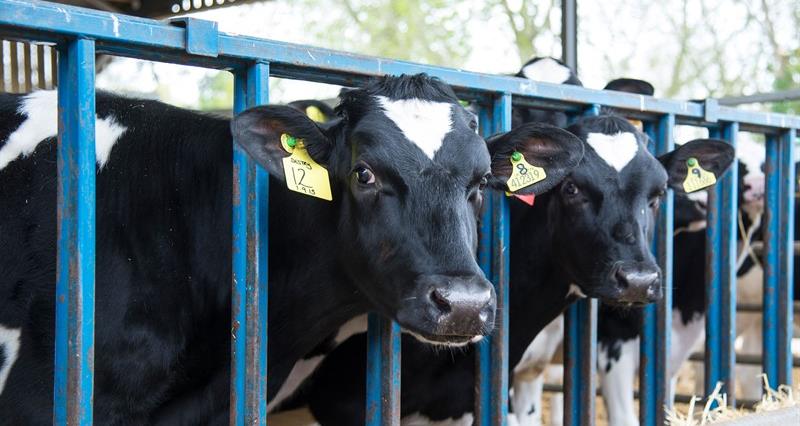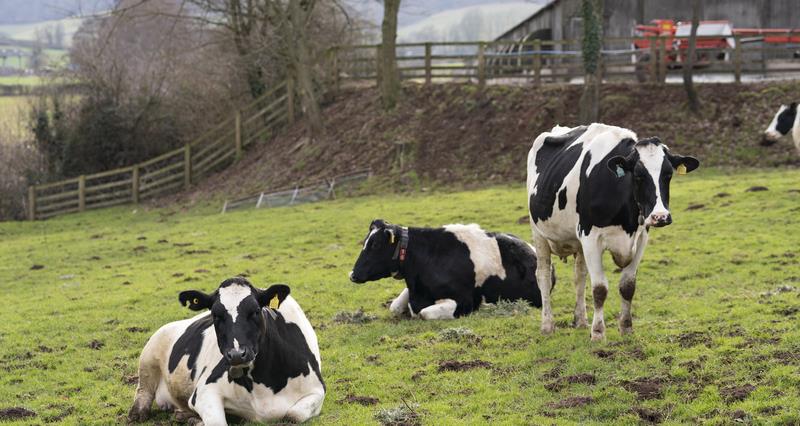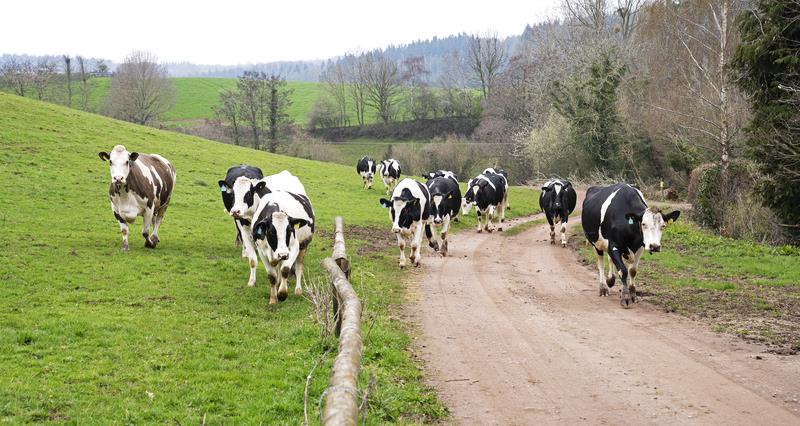Announced in June, the animal health and welfare review (formerly the annual health and welfare review) has been expanded to now include a second element involving a visit called the ‘endemic disease follow-up’.
This second element is intended to support farmers in England to reduce endemic diseases and conditions, increase the productivity of their animals, and improve their welfare. This will be achieved through further funding of vet visits and testing for livestock farmers.
The purpose of the endemic disease follow-up is to facilitate more in-depth testing for PRRS (Porcine Reproductive and Respiratory Syndrome) in pigs and identify persistently infected cattle on farms with BVD (Bovine Viral Diarrhoea).
In the case of sheep, the farmer will, in consultation with their vet, choose from a range of health improvement packages. These will target the syndrome that is most prevalent and provides most benefit to treat in each flock and include:
- ewe condition
- reproductive or lamb performance
- neonatal lamb survival
- external parasites, and
- lameness.
The funding currently allows an animal health and welfare review and endemic disease follow-up of a single herd or flock (an epidemiologically distinct unit) of a single species of beef cattle, sheep, pigs.
A farmer who is also a vet must find another vet to perform their review. They should not do the visit themselves.
It is Defra’s intention to expand this and to allow more than one single species and more than one herd or flock to be eligible.
Funding will be available until 19 September 2027, but all visits must be completed by 19 June 2027.
Latest news
Following the NFU Conference, there were a number of announcements made including two key developments on the IAHW (Improving Animal Health and Welfare) visits.
The first was an announcement to widen the scope of the support to allow a keeper to apply for a visit to cover all of their eligible livestock, regardless of species (pigs, sheep and cattle).
For example, a livestock keeper who has both a flock of sheep, and a herd of beef cattle would then be able to have both livestock checked, something which is not currently possible under the available offer.
The second announcement outlined the government’s intention to allow the support to be widened to every distinct separate eligible flock or herd of livestock. This will be crucial for those who manage multiple flocks/herds in different locations and will enable more holistic support across the various livestock under their management.
It is important to note that these announcements will be taking effect at different times; the first announcement will be active from the end of February, while the second announcement will be implemented during the summer.
Access to funding
Eligibility is open to farmers in England, as long as you meet the minimum number of livestock for your selected species:
- 11 or more beef or dairy cattle.
- 21 or more sheep.
- 51 or more pigs.
You needed to have had an animal health and welfare review before you can access the endemic disease follow-up.
The offer of support will remain available until 19 June 2027, meaning all visits and follow ups must be completed by then. The claim deadline will be 19 September 2027.
To apply, you will need your RPA customer reference number. The online application process should take roughly five minutes to complete. There are some further requirements for applying.
-
The claim must only for livestock registered in England.
-
The claimant be responsible for the welfare of your livestock when the vet does a review or follow-up.
-
The claim can only be for businesses with a SBI (single business identifier linked to a CPH (county parish holding) number.
-
The CPH number must be registered in England.
-
The CPH number cannot be an 8,000 number used for abattoirs, pet food manufacturers, racing pigeon establishments and showgrounds, or a 9,000 number used for poultry keepers.
Funding provided
Funding is based on species, rather than the number of animals. This means that large and small flocks or herds will still be paid the same amount provided they meet the minimum number of stock. The current figures for funding are outlined in the table below. The funding is intended contribute to the cost of testing and the time taken to perform the review and follow up visit. The difference in payments reflects the different costs of the associated tests for each species.
A farm can have up to three animal health and welfare reviews over the course of an agreement, with three endemic disease follow ups on the same herd or flock by June 2027. What this means is that if a review was carried out on a flock of sheep, then a subsequent endemic disease review must also be focused on those sheep as well.
Funding can still be applied for even in cases where a farmer has received a Lump Sum Exit Scheme Payment.
| Species | Animal health and welfare review funding | Endemic disease follow up funding |
| Pigs | £557 | £923 |
| Sheep | £436 | £639 |
| Beef cattle | £522 | £837 if review result is positive £215 if review result is negative |
| Dairy cattle | £372 | £1,714 if review result is positive £215 if review result is negative |
How the review works
The animal health and welfare review is the initial element that can be funded where a vet, or their chosen team, can visit the farm and review your livestock. This can be in a one-off visit or done across multiple visits depending on when is convenient.
What an on farm visit covers
The review itself should last roughly 2-3 hours and will cover (depending on your chosen species):
• assessment of diseases and conditions, including testing for endemic disease (for beef and dairy cattle, and pigs) and testing the effectiveness of medicines to treat worms (for sheep)
• advice on how to improve animal health and welfare, and
• advice on how to increase animal productivity.
Testing
In terms of testing relevant livestock, it is important that both the farmer and vet understand the approved tests and where the test should be sent, as required for funding under this support.
Failure to do so will invalidate any claim for payment. The sets out in detail what is required for each species. The below table is a summary of the major tests which the scheme will fund.
These tests form the basis of the initial review, and the review must be completed before any claim is made.
| Species | Test type | Minimum number of samples taken from: |
| Beef cattle | BVD blood (serum antibody test) | Five unvaccinated cattle aged 9-18 months per management group in up to two groups. |
| Dairy cattle | BVD bulk milk test. The farmer can take the bulk milk sample without the vet, if confident in doing so. | A representative milk sample from the bulk tank. |
| Sheep | Wormer treatment check. The farmer can collect faeces samples, if confident in doing so. | Minimum of 10 lambs less than 12 months old. If you have less than 10 lambs on your farm, you can still apply, but you must test all lambs in your flock. |
| Pigs | Test for PRRS antibodies. This test uses the enzyme-linked immunosorbent assay method. | Minimum of 30 pigs sampled using five oral fluid ropes. |
How testing can work with other farm requirements
The tests under this support can be either:
• arranged with your review to fit in with your existing testing schedule if you’re already testing for these diseases or conditions, or
• use review test results for other accreditation schemes you’re a member of. Check with the accreditation scheme that they will accept testing from the review.
You cannot use other accreditation scheme test results for this review funding. If you ask the vet to test for other medical conditions or diseases, you must pay for that separately.
The review requires you to discuss health and welfare advice about your livestock with your vet and you may also discuss topics such as medicine usage, biosecurity or any other concerns that you may have.
After the farm visit and testing
Report – once the review is complete, the vet should provide the farm with a written report outlining the assessment, laboratory test results and any recommendations the vet has such as advice or suggested health and welfare actions and other findings. For example, biosecurity recommendations and medicine usage, actions to address issues from the follow-up – this is likely to be between two and three, but can be more or less based on individual needs and information about other concerns the farmer raised. Defra will not ask to see the report.
Summary – you must ask the vet to give you a summary of the review’s report (details are set out in the information on ). The summary gives the information you need to make a claim. The summary must be a separate document. It can be a digital or paper version. When you claim, the RPA may ask to see it as evidence.
Claim funding – once the initial review has been carried out, it will be important to submit the first claim for the visit through the online portal before then scheduling a follow-up visit. The gap between animal and health reviews has to be at least 10 months. You can still have an endemic support follow-up during these 10 months. Your review claim must be approved before you claim for the resulting follow-up.
More information
- The process of applying for the review: .
- How the review works: .
- Apply for the review: .
- Vet requirements: .
After a review
After the vet has completed a review, you can choose to have an endemic disease follow-up. A follow-up can only be done after a review.
If you have already engaged with the animal health and welfare review, then you can engage directly with the endemic support follow-up, so long as it is up to 10 months after the initial review.
Vet attestation
You can also ask the vet to include a vet attestation number in the animal health and welfare summary. You’ll need this number if one or both of the following enter the food chain and may be exported to the EU:
- Livestock you produce.
- Animal products derived from your livestock.
Old agreements
If you completed an animal health and welfare service review under the old agreement model, then there are some additional steps to follow before you will be able to submit an endemic disease follow up.
You must have an IAHW (improving animal health and welfare) agreement in place before you organise your first endemic disease follow up.
You must also claim for any previous reviews under the old agreement before the application system will let you apply for an IAHW agreement.
You can then carry out a follow-up so long as it is within 10 months of the previous review; this must also be for the same species as the previous review. It cannot be a new species. It can only be done by having a IAHW agreement in place.
After this has been completed, you must wait until 10 months have passed since the first review to then organise your second review – this will be the first review under your new IAHW agreement.
This applies even if your review claim was rejected under the previous agreement.
How the endemic disease follow-up works
If you do an endemic disease follow-up, you must do the follow-up within 10 months after the animal health and welfare review and have successfully claimed for that review, and then wait at least 10 months before your next endemic disease follow-up.
An endemic disease follow-up can only be carried out where an animal health and welfare review has already been completed and claimed for.
The endemic disease follow-up can cover a further assessment of:
- diseases based on the results of your review (beef cattle, dairy cattle, and pigs)
- diseases and conditions based on your animal health and welfare priorities (sheep), and
- animal health and welfare based on the results of your review.
The vet will also advise you on further steps to improve:
- control and prevention of disease
- animal health and welfare, and
- animal productivity.
If you have already undertaken an animal health and welfare review visit, then you can move straight onto an endemic disease follow-up.
You must have an agreement in place before you do a follow-up. A follow-up usually takes between two and three hours. It can happen:
- over several visits, or
- a single visit.
The Endemic Disease follow-up needs to include the following.
- Sampling for disease or condition testing based on the species you have chosen and the result of your animal health and welfare review. The vet must follow guidance on the required sampling and testing. This can fit in with your existing testing schedule if you’re already testing for the relevant diseases or conditions.
- You must ask the vet to give you health and welfare advice about your livestock. You may discuss topics such as biosecurity, medicine usage and any other health and welfare concerns you have.
- You must ask the vet to give you a written report that gives all assessments and results and recommended actions. The report should be a specific report for this follow-up. Defra and the RPA will not ask to see the report.
- You must ask the vet to give you a summary of the follow-up. The summary gives the information you need to make a claim. The summary must be a separate document and when you claim, the RPA may ask to see it as evidence.
- Again you can also ask the vet to include a vet attestation number in the summary.
- You’ll need this number if one or both of the following enter the food chain and may be exported to the EU:
- livestock you produce, or
- animal products derived from your livestock.
More information
- .
- .
- .
- What to expect from an endemic disease follow-up: .
- Vet requirements: .
It is important to read the information including the terms and conditions set out in the aforementioned guidance. The terms and conditions regarding an agreement under this scheme can be found at: .
Claiming for an agreement
Once the animal health and welfare review is complete, the next step is to submit a claim using the online platform and the summary from the vet during their visit.
The claim requires details from the vet’s summary, which is why it is so important to have the summary before attempting to claim.
An endemic disease follow up can only be organised once a claim has been submitted for the initial animal health and welfare review.
Claiming for the support will remain open until 19 September 2027, while all visits must be completed by 19 June 2027.
More guidance on how to claim for these visits can be found at: .



